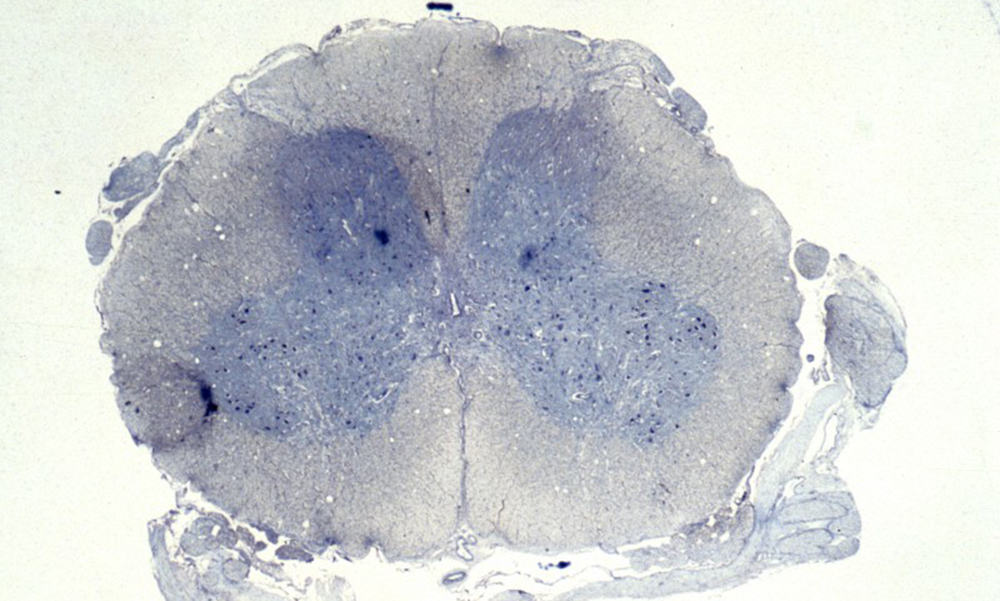Reducing spasticity in patients with chronic spinal cord injury. An article review.
Posted on 28th January 2014 by Ashton Hardison

Adams, MM, Hicks, AL. Comparison of the effects of body-weight supported treadmill training and tilt-table standing on spasticity in individuals with chronic spinal cord injury. The Journal of Spinal Cord Injury. 2011. 34; 448- 494.
You might be asking yourself, what is spasticity? Basically, spasticity is a fancy word for tightness or stiffness. Try kicking your leg out. Pretty easy, right? Now imagine trying to straighten your leg with 1000 pounds on top of it. Not so easy. That is how it feels for a patient that has spasticity. It is really difficult to make “normal,” fluid movements because the muscles in your limbs are constantly firing. On one of my clinicals, I asked a patient what the spasticity they were experiencing felt like. He said it was like a “wicked charley horse.” Try to imagine performing everyday activities with a “wicked charley horse.” There is no doubt that it would interfere with your daily activities. This is everyday life for some people with spinal cord injuries (SCI). In my clinical, I saw many patients who were experiencing spasticity. My clinical instructor used a variety of techniques to help decrease the spasticity. However, I was not aware of the research behind the techniques that she used. The following is a review of an article comparing the effectiveness of two interventions used for reducing spasticity.
What is it important?
The purpose of this study was to “determine the effects of body-weight supported treadmill training (BSWTT) and tilt table standing (TTS) on clinically accessed and self-reported spasticity, motor neuron excitability, and related constructs in individuals with a SCI.” All in all, they wanted to see the effects these 2 interventions had on decreasing spasticity. They used numerous outcome measures to get a picture of the severity of the spasticity and the effect it had on the patient’s lives. Decreasing spasticity is important because it can help increase overall function for the patient.
What did they do in the study?
There were 7 participants (6 males, 1 female) with varying levels of impairments. Participants performed 12 sessions over 4 weeks of either BWSTT or TTS, had a 4-week wash out period (where no intervention was performed), and then performed the other intervention for 12 sessions over 4 weeks. Each session was 45 minutes. These interventions sound pretty fancy but they can be easily explained. BWSTT uses a harness to take away a percentage of bodyweight, and in theory, should make walking easier. TTS is a little more complicated to imagine. A patient is placed on a table with straps at their hips and knees (may be other places as well, depending on the patient’s needs). The table starts in a horizontal position and is slowly inclined so that the patient is actually standing straight. The thought process with TTS is that the patient will receive a prolonged stretch to the hips, knees, and ankles to decrease stiffness.
What did they find?
The results from this pilot study indicate that some individuals with SCI and spasticity may benefit from participation in weight-bearing activity and that BWSTT and TTS may have different effects for certain outcomes. A single session of BWSTT had greater benefit for muscle tone and flexor spasms. Flexor spasms occur when muscle contracts and bends the limb. After 4 weeks of BWSTT compared to TTS, improvements were seen in flexor spasms and self-reported mobility. TTS produced more favorable results when decreasing extensor spasms for a single session and for multiple sessions. Extensor spasms occur when the muscles contract into an extended, or straightened position.
Major drawbacks?
There were several major drawbacks to the article presented above. There was a very small, heterogeneous sample size. The duration of the study may have been too short to see optimal results. As a future physical therapist, one of the things I would have changed about the article would have been to incorporate a functional test as an outcome measure. This article did a good job discussing and drawing conclusions on the two interventions for reducing spasticity. However, as a physical therapist, I’m more concerned with the effect these interventions have on function (walking, transfers, etc).
Take home message
BWSTT and TTS can both be used to decrease spasticity in patients with a SCI. In the clinic, it may be more beneficial to use BWSTT to reduce flexor spasms and TTS to reduce extensor spasms. It Is important to remember reducing spasticity is an impairment-based solution. As a PT, it is more important to use functional outcomes as a means to improve patient outcomes. Reducing spasticity may be important in early rehabilitation, but then focus should shift to more functional measures that will help increase the patient’s quality of life.




No Comments on Reducing spasticity in patients with chronic spinal cord injury. An article review.